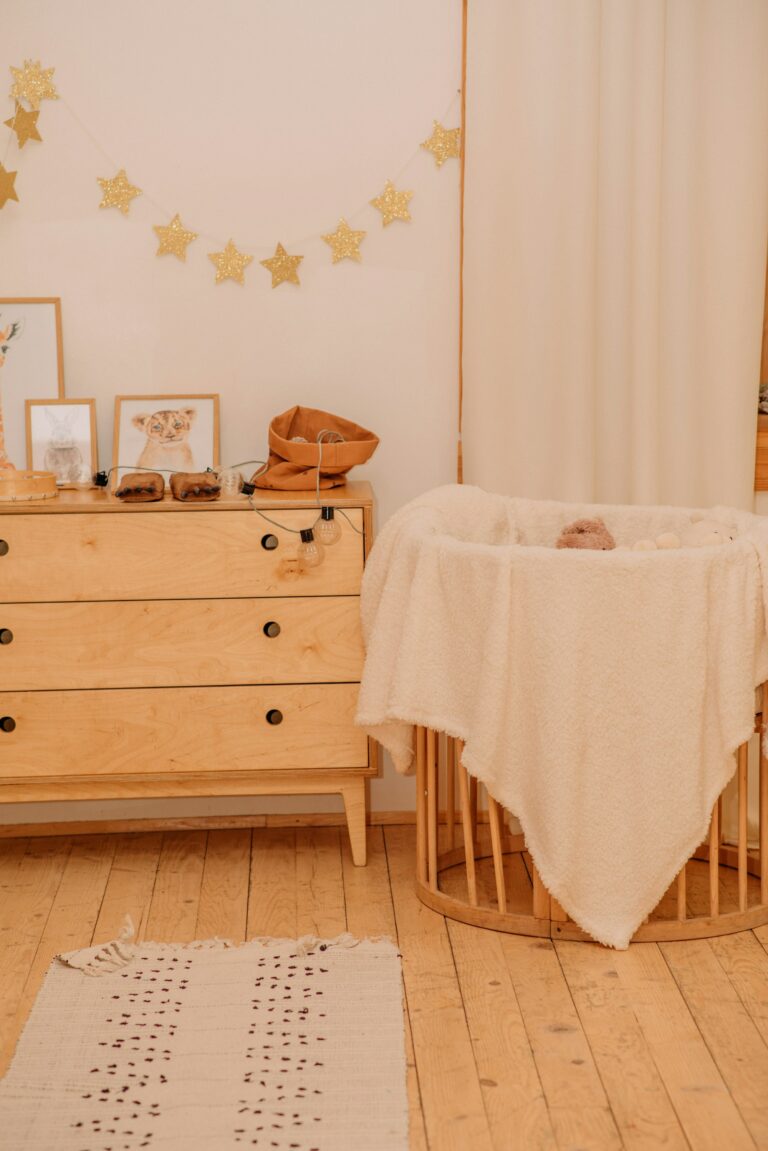Bringing your twins home for the very first time can feel both exhilarating and overwhelming—a patchwork of anticipation, sleepless nights, and endless questions. Everything seems multiplied: bottles, diapers, cries, and, yes, love. Returning home with twins is not simply twice the work of a single newborn; it brings a unique set of considerations, from multifaceted care routines and emotional turbulence to the logistics of everyday life. You may find yourself asking: Should twins sleep together or apart? How can you make space for each child’s individuality amidst tandem routines? What support exists, both practical and psychological, to keep fatigue and “twin parent guilt” at bay? Below unfolds a comprehensive exploration of the realities of returning home with twins—grounded in up-to-date pediatric knowledge, seasoned experience, and a respectful embrace of every family’s journey.
Meeting the First Days: Organizing and Supporting Your New Family
The moment you cross the threshold with two tiny new arrivals, life alters in ways both subtle and profound. Returning home with twins often means embracing chaos—but with careful preparation, certain rhythms can begin to emerge. Pediatricians emphasize the benefit of consistency for twin infants, yet flexibility remains essential.
Co-bedding or separate cots? This perennial question has roots in both tradition and science. Research shows that in early weeks, twins may find comfort in proximity (as long as safe sleep guidelines are followed—firm mattresses, no loose bedding, each baby on their back). Co-bedding in the same cot, or “co-sleeping,” can regulate their body temperatures, calm fussiness, and even promote synchronized feeding and sleeping. However, individual needs sometimes diverge—one baby may need more space or demonstrate signs of discomfort. Regularly reassessing sleep arrangements is paramount.
The sudden surge of worry—“Am I giving each baby enough attention?”—is normal. This sensation, sometimes called ‘twin parent guilt,’ can be intense but typically fades as routines are personalized for each baby. Experts encourage making space for individual moments. Over time, small rituals—one-on-one cuddling, individual feeding, distinct play—help nurture each child’s developmental path and emotional security.
Planning Ahead: The Importance of Medical and Community Support
Returning home with twins, especially if born prematurely or with a low birthweight, often follows a longer hospital stay. Neonatal intensive care can be emotionally exhausting. Sometimes only one twin is discharged first, splitting parents’ focus between home and hospital.
A critical step before discharge: linking up with a midwife or postnatal nurse who can visit your home. Many hospitals coordinate regular check-ins, evaluating feeding, weight gain, jaundice, and parent wellbeing. Don’t hesitate to ask about these services. Community clinics and maternal-infant welfare centers frequently supplement home medical care, relaying practical tips and emotional reassurance.
Specialized organizations for multiple births—offering everything from peer support and breastfeeding groups to rental equipment—can be invaluable. Some even facilitate psychological counseling or provide discounts on bulk essentials. Check for financial assistance or subsidies (health insurance, government supports) specifically for families of multiples. Accept offers from family and friends to help with shopping, meals, or older siblings—these gestures ease the often relentless pace of early twin care.
Home Setup: Safety, Comfort, and Organization
An organized, baby-proofed home forms the launchpad for smoother days. Returning home with twins demands adaptations: two cribs or a safe co-bedding solution close to your bed, at least two diaper-changing stations (ideally on separate floors), and clearly labeled storage for clothing and feeding supplies. Check that smoke and carbon monoxide detectors work. Remove choking hazards, cover outlets, anchor large furniture, and secure safety gates for stairs.
Gentle, dimmable lighting soothes overtired babies. Feeding chairs that encourage ergonomic posture help prevent back pain, a frequent complaint among twin parents. Stock multiple sleep sacks, double feeding pillows (designed specifically for twins), and a robust double stroller—ensuring your gear lightens, rather than adds to, your physical load.
Regular laundry (as uninspiring as it sounds) shrinks stress—try baskets or bins labeled by size or function. Prepping and freezing casseroles or soups before returning home with twins transforms turbulent days into moments of calm, with nourishing meals always just a reheat away.
Feeding Twins: Navigating Nutrition, Routines, and Challenges
Feeding twins often feels like a marathon rather than a sprint. Feeding preterm infants (a frequent scenario with twins) brings medical complexity: smaller stomach capacity, immature sucking reflexes, and, occasionally, the need for enriched formula (higher calorie content for babies under 3000 grams).
Breastfeeding both babies—sometimes even at the same time, known as “tandem feeding”—is entirely possible and offers physiological benefits (antibodies, optimal nutrition, bonding). Success rates improve sharply with early lactation consultation, hands-on support, and well-designed nursing pillows. If bottles are part of your plan, systematize preparation and cleaning routines to avoid late-night confusion.
A written feeding journal—tracking volumes, times, and any feeding reactions—lets you spot trends, ensure balanced intake, and tailor routines as medical needs evolve. Not all twins will feed at the same rate; be patient and flexible, and seek professional guidance if problems persist.
Synchronizing twins’ feeding and sleep schedules, whenever possible, means more predictability and longer stretches of rest for you. This can take time—every pair is unique, every day, a work in progress.
Self-Care and Sleep: The Parent’s Physiology Matters Too
Lack of sleep is nearly universal post-birth, but returning home with twins amplifies parent fatigue to a different register. Cumulative sleep deprivation impacts both mood and physical health—heightening the risk of postnatal depression and compromising immune response.
Prioritize rest. Even short naps during your twins’ sleep cycles accumulate to significant benefit. Resist societal pressure to be perpetually productive when babies nap; instead, accept rest as a fundamental need, not a luxury. Negotiating support with your partner, friends, and relatives prevents burnout. Some health insurance plans even cover postpartum assistance for families with multiples.
Hydration and regular, small meals help maintain your stamina—physiologically, your body remains in recovery mode for weeks (especially after caesarean birth). If you notice symptoms such as persistent sadness, anxiety, or detachment, consult a healthcare provider early. The risk for postpartum mood disorders is statistically higher with twins, so vigilance and open dialogue matter.
Supporting Older Siblings: Psychological and Family Dynamics
Bringing home twins is as much a transition for siblings as for parents. Preschoolers or older children may experience ambivalence, envy, or worry about changes in family attention and rituals.
Preparing your child ahead of time (reading about twins, practicing gentle touch, setting up role play) channels curiosity and tempers anxiety. Giving them specific, small “helper” roles—fetching wipes, choosing outfits, singing lullabies—builds confidence and inclusion. Choosing moments for focused, one-on-one attention can melt away jealousy and reinforce belonging.
If challenging behaviors crop up, respond with empathy—children express disruption in many ways, and reassurance is the antidote, not discipline. Open conversations and patient listening set the stage for smoother adaptation.
Establishing and Evolving Routines for Two
Order emerges gradually, not overnight. Twins often feed every 2–3 hours, and staying attuned to hunger or sleep cues ensures the best chance of synchronizing their cycles. Attending prenatal classes tailored for families expecting multiples can provide techniques for tandem feeding and advice on typical feeding challenges.
Routines extend beyond feeding. Diapering and bathing are more efficient with stations on each floor, and alternating baths lets each baby enjoy individualized attention while fostering hygiene habits. Tracking patterns with a daily log supports ongoing adjustments and informed discussions with your pediatrician.
Night shifts are less exhausting if parents share duties—alternating feeds or caring for both twins together. Digital tools (planning apps, shared calendars) can help schedule helpers, activities, and even moments of self-care.
Building a Support System and Protecting Your Peace
Returning home with twins grants entry into a larger community—family, friends, organizations for multiples, and digital networks all play supportive roles. Seeking support is not a weakness, but a strategy. Peer groups (both local and virtual) deliver empathy, advice, and often concrete aid—second-hand strollers, meal rotas, or emotional check-ins.
Set limits on visits, particularly in the first few months, to prioritize your babies’ health and your recovery. For premature twins, reducing exposure to crowds limits infection risk. Use video calls for distant loved ones who wish to connect without overwhelming your home.
Delegate tasks liberally; perfection is not the yardstick. Instead, strive for functional routines that respect your family’s rhythms.
Postnatal Care: Medical, Emotional, and Physical Recovery
Regular follow-ups with your pediatric and postnatal team remain vital—premature twins often require more frequent weight checks and developmental screenings, as growth and milestones can lag behind singleton norms. Journaling intake (milk, medications), sleep, and stool patterns gives you and your care team clear data for targeted guidance.
Parental recovery—especially after a twin pregnancy, operative delivery, or postpartum complications—deserves attention. Symptoms such as back pain, diastasis recti (abdominal muscle separation), or pelvic floor weakness are common. Gradually resume gentle exercise only when approved medically.
Emotional health is never an afterthought. The barrage of hormones, sleep loss, and relentless demands can erode resilience. Persistent feelings of sadness or hopelessness warrant support—professional counseling, peer groups, or targeted therapies bolster recovery and family wellbeing.
Troubleshooting and Adjusting Course
Difficulties abound—and that’s entirely expected. Struggles with feeding, sleep, or routines often ebb and flow. List out issues: Is tandem feeding overwhelming? Would consulting a lactation expert help? Do routines need reshaping as babies grow? Are sources of support being maximized? Staying adaptive—not rigid—fosters confidence.
Moments of exhaustion, anxiety, or doubt arrive for every twin parent. Early intervention—whether clinical, practical, or emotional—shortens suffering and builds capability. Each pair of twins, each family, evolves at their pace.
Key Takeaways
- Returning home with twins sets the stage for an intense and beautiful family evolution—preparation (both logistical and emotional) lowers the threshold of stress.
- Medical realities matter: Prematurity, breastfeeding challenges, and postnatal recovery require specific support, clear routines, and regular health oversight.
- Support systems—family, community, specialized organizations—are not just optional, but transformative. Financial benefits and peer support can lighten the load.
- Balance is dynamic; every child, every parent, every routine will adjust (and readjust) as needs change.
- Returning home with twins can spark doubts about attention and individuality—trust rituals, nurture one-on-one moments, and embrace each child as singular.
- Protect parent rest and wellbeing—the foundation for healthy, resilient families starts with your recovery, both physical and psychological.
- There is no one-size-fits-all solution, but credible resources, professionals, and evidence-based strategies are available at every step. For tailored advice and free child health questionnaires, download the Heloa app.
Returning home with twins is not a test to pass or a puzzle to solve perfectly—but an unfolding journey, rich in complexity, resilience, and discovery.
Questions Parents Ask
What should be on a checklist when returning home with twins?
It’s helpful to get organized before arriving home. Try preparing two cribs or bassinets and stocking up on essentials—diapers, wipes, ointments, and clothing in several sizes. Create a changing station with everything accessible. Pack diaper bags with basics like bottles, pacifiers, and extra clothes for outings. Check that your home is safe with baby monitors installed and common hazards removed. Decide in advance how you’d like to approach feeding, and gather support around you: family, friends, and healthcare providers can all offer assistance. Most importantly, take care of yourself—short naps, hydration, and small self-care routines help, especially in the early days.
How can parents manage the logistics of caring for two newborns at once?
Managing daily life with twins can feel like a juggling act. Try setting up stations in your home for feeding, changing, and soothing so everything is within easy reach. Writing down feeding and sleeping times may help you spot patterns or adapt routines as your babies grow. It’s often helpful to create a flexible schedule: sometimes both babies’ needs will align, other times they may not. Don’t hesitate to accept help from your network and remember, every family develops rhythms that suit them best.
Is it normal to feel overwhelmed after bringing twins home?
Absolutely—feeling overwhelmed is both natural and common. Looking after two newborns brings many emotions, and adjusting takes time. Rassurez-vous, these feelings usually fade as you and your babies settle into new routines. It’s important to reach out for support when you need it, whether that’s speaking with loved ones, joining a parent group, or consulting a specialist. There’s no single right way to adapt; everyone finds their own balance.
Further reading:









